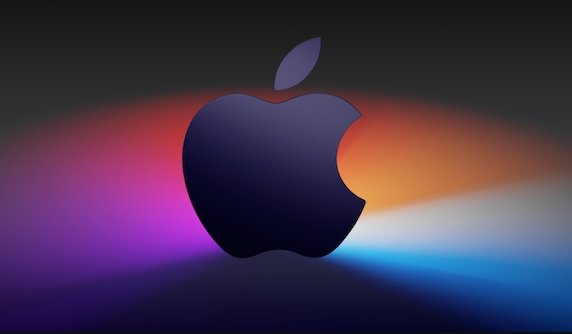How to create a bootable macOS installer
To create a bootable macOS installer, use a USB drive and Apple’s built-in tools by following these steps: 1. Prepare the USB drive by formatting it as Mac OS Extended (Journaled) or APFS with GUID Partition Map in Disk Utility, naming it “Untitled” or “MyVolume”; 2. Download the desired macOS installer from the App Store and quit the installer after download; 3. Use Terminal to run the createinstallmedia command with sudo, adjusting the path for your macOS version and USB name; 4. Boot from the USB by restarting the target Mac and holding Option to select the installer. The process takes about 20–30 minutes, and the bootable drive works on compatible Macs, allowing clean installs, troubleshooting, or offline setup.

Creating a bootable macOS installer is useful for clean installs, troubleshooting, or setting up multiple Macs. Here’s how to do it using a USB drive and Apple’s built-in tools.

What You’ll Need
- A USB flash drive with at least 16GB of storage (32GB recommended for newer macOS versions)
- A Mac with internet access
- The macOS installer app (downloaded from the App Store)
- About 20–30 minutes of time
Step 1: Prepare the USB Drive
- Plug in your USB drive.
- Open Disk Utility (you can find it via Spotlight or in Applications > Utilities).
- Select the USB drive from the sidebar (usually listed under "External").
- Click Erase.
- Set the following:
-
Name:
Untitled(orMyVolume— important for later commands) - Format: Mac OS Extended (Journaled) or APFS (APFS preferred for macOS High Sierra and later)
- Scheme: GUID Partition Map
-
Name:
- Click Erase, then Done when finished.
⚠️ Warning: This erases all data on the drive.
Download the macOS Installer
- Open the App Store.
- Search for the macOS version you want (e.g., macOS Sonoma, Ventura, Monterey).
- Click Get or Download.
Note: The installer will open after download — quit it without proceeding.

The app will appear in your Applications folder as something like:
Install macOS Sonoma.appInstall macOS Ventura.app
Step 3: Run the Createinstallmedia Command
You’ll use Terminal to turn the USB into a bootable installer.

- Open Terminal (found in Applications > Utilities).
- Enter the following command, adjusted for your macOS version:
sudo /Applications/Install\ macOS\ Sonoma.app/Contents/Resources/createinstallmedia --volume /Volumes/Untitled
Replace:
SonomawithVentura,Monterey, etc., depending on what you downloaded.Untitledwith your USB drive’s name if you used something different.
- Press Enter.
- You’ll be prompted for your admin password (no visible typing).
- Confirm by typing Y when asked if you want to erase the disk.
- Wait while the process completes — it may take 20–30 minutes. You’ll see progress messages.
When done, you’ll see:
“Copy complete. You may now quit Terminal.”
Step 4: Boot from the Installer
- Plug the USB into the Mac you want to install macOS on.
- Restart the Mac.
- Immediately hold down Option (Alt) while it boots.
- Select the USB drive (it may appear as “Install macOS”).
- Follow the on-screen instructions to install macOS.
Tip: You can also use Command Option R to boot into Internet Recovery and then choose "Reinstall macOS," but a bootable USB is faster and works offline.
Notes and Tips
- The bootable drive works on Mac models that support that macOS version.
- Keep the installer updated — Apple sometimes releases new installer builds with security fixes.
- You can rename the USB after creation (e.g., “macOS Installer”), but don’t reformat it.
- If the
createinstallmediacommand fails, double-check:- The path to the installer app
- The USB drive name and format
- That you used
sudo
Basically, it’s a straightforward process once you have the right tools. Just be careful not to erase the wrong drive.
The above is the detailed content of How to create a bootable macOS installer. For more information, please follow other related articles on the PHP Chinese website!

Hot AI Tools

Undress AI Tool
Undress images for free

Undresser.AI Undress
AI-powered app for creating realistic nude photos

AI Clothes Remover
Online AI tool for removing clothes from photos.

Clothoff.io
AI clothes remover

Video Face Swap
Swap faces in any video effortlessly with our completely free AI face swap tool!

Hot Article

Hot Tools

Notepad++7.3.1
Easy-to-use and free code editor

SublimeText3 Chinese version
Chinese version, very easy to use

Zend Studio 13.0.1
Powerful PHP integrated development environment

Dreamweaver CS6
Visual web development tools

SublimeText3 Mac version
God-level code editing software (SublimeText3)

Hot Topics
 1798
1798
 16
16
 1750
1750
 56
56
 1594
1594
 29
29
 1475
1475
 72
72
 267
267
 587
587
 What is the sudo command and when should I use it?
Jul 02, 2025 am 12:20 AM
What is the sudo command and when should I use it?
Jul 02, 2025 am 12:20 AM
sudo stands for "substituteuserdo" or "superuserdo", allowing users to run commands with permissions of other users (usually root). Its core uses include: 1. Perform system-level operations such as installing software or editing system files; 2. Accessing protected directories or logs; 3. Manage services such as restarting nginx; 4. Modify global settings such as /etc/hosts. When using it, the system will check the /etc/sudoers configuration and verify the user password, provide temporary permissions instead of continuously logging in as root, ensuring security. Best practices include: only when necessary, avoid blindly executing network commands, editing sudoers files with visudo, and considering continuous operations.
 How to edit the hosts file on a Mac?
Jul 01, 2025 am 12:20 AM
How to edit the hosts file on a Mac?
Jul 01, 2025 am 12:20 AM
The steps to modify the Hosts file on your Mac are as follows: 1. Use the terminal to run the command sudonano/etc/hosts with administrator permission to open the file and edit it; 2. Add or modify the IP and domain name mapping, the format is "IP address space domain name", and cannot be separated by Tab; 3. Press Control O to save, and then press Control X to exit the editor; 4. Run sudokillall-HUPmDNSResponder to refresh the DNS cache to make the modification take effect; 5. It is recommended to back up the original file before modification to avoid format errors affecting network access. Pay attention to spelling and grammar when operating to ensure that every step is accurate.
 How to run older 32-bit apps on modern macOS?
Jul 12, 2025 am 12:32 AM
How to run older 32-bit apps on modern macOS?
Jul 12, 2025 am 12:32 AM
If macOS no longer supports 32-bit programs, you can try the following methods: 1. Use a virtual machine (such as ParallelsDesktop or VMwareFusion to install the old version of macOS to run 32-bit programs. You need to prepare a Mac, virtual machine software and legacy system image with good performance; 2. Find a 64-bit updated version of the software or use alternative software, such as using GIMP or AffinityPhoto instead of the old version of Photoshop; 3. Install Windows through BootCamp on Intel Mac to run 32-bit applications, but the operation is complicated and the driver may be incompatible; 4. If the software is no longer maintained, you can only keep the old Mac running. Each method has its own advantages and disadvantages, and should be based on the technology
 What is Private Relay in iCloud and how does it work?
Jul 14, 2025 am 12:11 AM
What is Private Relay in iCloud and how does it work?
Jul 14, 2025 am 12:11 AM
PrivateRelay is a privacy protection feature launched by Apple that hides user identities and browsing content through encryption and segmentation of network requests. The specific operation is divided into two steps: one is to encrypt the data and forward it through two relay servers. The first is to know the IP and the second is to know the content that does not know the user's identity; the second is to realize privacy isolation, and even Apple cannot obtain the complete record. Supported devices must meet: iOS15/iPadOS15/macOSMonterey and above systems, log in to AppleID and subscribe to iCloud services, and are only available for Safari browser. Its benefits include preventing ISP tracking, no additional settings are required, default activation, etc.; the limitation is that it does not support the wall surfing and only protects Safar.
 What is the difference between a Time Machine backup and an iCloud backup?
Jul 02, 2025 am 12:55 AM
What is the difference between a Time Machine backup and an iCloud backup?
Jul 02, 2025 am 12:55 AM
iCloud backup is suitable for critical data on iOS devices, while TimeMachine is used for full system backups of Macs. 1. iCloud automatically backs up settings, messages, photos, etc. on iPhone and iPad, but does not include re-downloadable applications and media; 2. TimeMachine requires external storage devices, which can back up the entire Mac system including files, applications and desktop layout; 3. iCloud is more convenient to use in daily life, relying on network and space management, while TimeMachine provides local storage and retains multiple versions of files; 4. Most users use both at the same time to achieve comprehensive data protection.
 How to set up file sharing between two Macs on the same network?
Jul 14, 2025 am 12:08 AM
How to set up file sharing between two Macs on the same network?
Jul 14, 2025 am 12:08 AM
To share files between two Macs on the same network, first make sure that the two devices are connected to the same LAN, then enable file sharing on the host, set shared folders and access permissions, and then connect from another Mac through the access sidebar or manually enter the SMB address, and finally you can browse, copy or transfer files. Common problems include waiting or restarting the network when the device cannot be discovered. If the permissions are incorrect, you need to check the username, password and sharing settings. If the connection fails, you can try the SMB address. If the firewall blocks, you can temporarily close the test.
 How to find large files on my Mac?
Jul 01, 2025 am 12:06 AM
How to find large files on my Mac?
Jul 01, 2025 am 12:06 AM
To free up Mac storage space, you can use three methods to find and process large files: 1. Use the system's own storage management tool to view the "big file" list in "About Native" - "Storage"; 2. Set file size and modification time in Finder to search for large files; 3. Use third-party tools such as DaisyDisk, OmniDiskSweeper or GrandPerspective to scan and visualize disk usage. Each method has its own advantages, the system tools are convenient and fast, Finder provides more accurate search options, and third-party software provides stronger analysis functions. Remember to clear the wastebasket after deleting it to avoid remaining space.
 How to customize the Dock on a Mac?
Jul 12, 2025 am 01:29 AM
How to customize the Dock on a Mac?
Jul 12, 2025 am 01:29 AM
To adjust the Dock on Mac according to usage habits to improve efficiency, you can follow the following steps: 1. Adjust the size and position: Go to "System Settings" > "Desktop and Dock", check "Automatic Show and Hide Dock", slide the bar to adjust the icon size; select the left, bottom or right place in "Dock Position". 2. Add or remove apps and folders: Drag the app from "Applications" to the Dock, and drag out the outside of the icon to remove the item. 3. Customize behavior and animation effects: Set click icon to display recent documents, window thumbnail previews, and use dividers or empty launchers to improve organization and quickly return to the desktop. Turning on the auto-hide function helps save screen space and make your work more focused.






